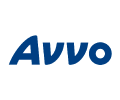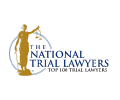The term “human trafficking” is defined as a modern-day type of slavery in which offenders benefit from forced labor and/or sexual exploitation of women, men, and children. It's an infringement of fundamental human rights as well as a crime under California's state law and US federal laws.
Sex trafficking, on the other hand, is the practice or action of illegally transporting a person from one area or country to another for prostitution, commercial sex work, pornography, or exotic dancing. When the victims are minors, sex trafficking doesn't necessitate the use of coercion or force. This is because minors cannot consent or engage in any sexual activity under any circumstances.
Labor trafficking is a modern-day kind of slavery where people are forced to perform services or labor under duress, coercion, or fraud. Victims of labor trafficking are often coerced into low-wage domestic servitude, restaurant, massage parlor, agricultural, construction, or harsh factory jobs.
Human trafficking doesn't necessitate the transportation of a victim over international or state boundaries. It is indeed a domestic concern in San Diego and California state as a whole — for instance, the FBI named San Diego among the top thirteen hotspots for child prostitution in the country.
Who is a Human Trafficking Victim?
Identifying human trafficking victims can be challenging since traffickers often segregate them from their neighborhoods, families, and the general public. Here are some examples of how to identify these victims:
- Human trafficking victims include men, children, and women
- The victims could be local or foreign, including US citizens and permanent residents, as well as foreign nationals, both legally documented and undocumented
- Victims often comprise runaway youths who have been recruited and solicited for prostitution or other kinds of sexual abuse or exploitation
- The victims frequently have a background of domestic violence or child abuse, although they come from every family and socioeconomic background
Who is a Human Trafficker?
Human traffickers are people who, under both state and federal law, attempt to entice or allure a minor or juvenile to indulge in pornography, prostitution, or other kinds of sexual abuse and exploitation. Perpetrators include spouses, peer recruiters, family members, and organized criminal gangs or groups, and they:
- Violate or deprive the personal rights of anybody aged 18 or older using deception, duress, or coercion to force the person to engage in pornography, prostitution, or other kinds of sexual abuse or exploitation
- Violate or deprive the freedom of anybody under/over 18 years by using duress, coercion, or deception to gain services or forced labor
What Are the Signs of Human Trafficking Based on Minor Sexual Exploitation?
Human trafficking could occur in different settings, such as suburbs, cities, and low/wealthy-income neighborhoods. Even amid their regular activities, community members are frequently exposed to sex and labor trafficking scenarios and are unaware of it. Parents, employers, teachers, counselors, doctors, nurses, and other specialists, as well as friends of the victim, are often oblivious of the ill-treatment taking place right before their eyes. These include:
- Trying to get away from their homes
- Chronic absenteeism, disobedience
- Grades dropping unexpectedly
- Isolation from regular friends or changing friends
- Rumors about sexual activities among students
- Changes in attitude, behavior, or clothing that occurs unexpectedly
- Anger, aggressiveness, suicidal thoughts, or fear
- Rumors of a new "lover" who sounds mysterious and/or secretive
- The use of controlled substances and/or drugs like ecstasy, cocaine, and marijuana
- Loss of weight
- Bruises, scars, or other types of physical harm
- Multiple handsets or a new mobile phone
- Use of prostitution-related terminology
- Tattoos depicting pimping or prostitution
- Secrecy on social media and over the phone
A more comprehensive list of signs of human trafficking centered on forced servitude or labor and sex exploitation could be found on the National Resource Center's page.
What Measures Has The District Attorney's Office Of San Diego Taken To Combat Human Trafficking?
- Raised awareness and prevention by enacting the Posting Legislation (SB1193) and implementing the ProtectSanDiegoKids.org campaign created by the District Attorney's Office of Alameda
- The Human Trafficking and Sex Crimes Unit is comprised of professional prosecutors, detectives, victim advocates, paralegals, and personnel that are dedicated to combating human trafficking across all frontiers: detection, education, prevention, and prosecution. 619-615-6426 (Human Trafficking and Sex Crimes Unit)
- Partner with law enforcement agencies to more effectively charge the perpetrators. (In comparison to 2009, the number of cases has tripled)
- Working together with community support providers to guide and support crime victims
- Providing professional coaching to victim advocates to improve victims' compassionate treatment
- Training for prosecutors, community partners, and law enforcement
- Using advanced computer technology to track gangs' rising involvement in human trafficking
- Supported laws that hold perpetrators accountable for their actions while handling victims with compassion
- Engaged in Multi-disciplinary task forces and Human Trafficking Law Enforcement
- Through the Boys and Girls Club organization, there has been a development and implementation of the "Girls Only" Toolkit to keep girls safe from human traffickers
How Can Human Trafficking Be Prevented?
Here is what you can do:
- Learn about the myths and facts about human trafficking and educate yourself
- Save the hotline number for human trafficking on your cellphone and share it with others via social media
- Text BeFree (233733) or call 1-888-3737-888 to report suspicious activities of human trafficking
- Spread awareness by displaying posters and/or flyers of human trafficking on your business premises
- Curb the orders for labor and sexual exploitation, which is the source of profit for human traffickers, for example purchasing cheap labor or sex
- Learn about the red flags and warning signs of human trafficking
- Encourage and support local institutions to train and educate teachers, health providers, counselors, and employees about this issue
- Support laws that ensure perpetrators are held accountable and victims are treated with dignity
- Encourage and support the local institutions like schools to teach children and minors about this subject so that they could avoid pitfalls in the future
- Support human trafficking victims by embracing them into our societies and connecting them to access professional services
- Encourage your faith-based or civic organizations to learn and teach their colleagues about it
Safety Hints
Be Cautious When Using the Internet
Traffickers reach several victims and consumers by advertising online and recruiting. Internet-enabled gadgets, such as cell phones, and social media have enabled them to reach vulnerable teens, adults, and children. This has also enabled traffickers to broaden their customer base, resulting in increased profits and encouraging crime. The internet is the most popular platform that has enabled traffickers and pimps to buy and sell their victims. Children and women who are advertised for sex on the internet appear to be acting independently, yet they are more frequently than not victims of trafficking.
What Can You Do to Safeguard Yourself and Your Loved Ones?
- Don't chat with strangers or people you don't know
- Don't share any private information on social media that you wouldn't want a stranger to see
- Don't trust disguised assailants who purport to be producers, photographers, or any other person who would make you be known to many
- Accept no invitations to "parties" from anyone who isn't in your close group, and always inform a parent, guardian, or friend about your plans
- Don't be fooled by statements that are regularly used to entice victims, such as "You have a beautiful body. You could be able to make some cash "or "I've come to help you"
Public School Prevention Education
The San Diego Trafficking Prevention Collective is a multi-stage education project that blends schooling in early childhood, a classroom-based schedule, and interactive theater to reduce the number of minors falling prey to human traffickers in San Diego. This Collective is supported locally in collaboration with the DA's Office. Feel free to visit www.SanDiegoTPC.org for more information on the Collective.
Information From NHTRC
The National Human Trafficking Resource Center (NHTRC) and the Polaris Project are funded by the US Department of Health and Human Services and started running a 24/7 toll-free hotline back in 2007. It is still doing so today.
A call specialist could connect a victim with a local social service provider and law enforcers who can assist him or her in escaping exploitative settings and relocating to secure locations where he or she would receive services like health care, emotional support, and legal assistance.
Who Should You Contact?
Human trafficking victims could be children, women, men, adults, foreign citizens, or American nationals. If you feel you are a survivor of trafficking, aid is available. It's accessible seven days a week, 24 hours a day. Making that call will get you assistance, training, referrals to programs, and more information. To seek assistance for yourself or somebody else, or to report any suspected human trafficking activity:
- Text "Help" or "Info" to BeFree (233733) or
- Call the toll-free number 1-888-3737-888
Please take note that if you’re in urgent danger, dial 911 or contact your local law enforcement department as soon as possible.
Community Initiatives and Resources
With the assistance of the San Diego DA Office, victim services, police, Sheriff, community-based, faith-based, and civic groups, the San Diego City Human Relations Commission launched a county-wide initiative to execute a new statute requiring the display of specified information regarding human trafficking along with the toll-free hotline number at required locations. You can get more details about the commissioners and the commission by visiting their website or contacting them at
Section 52.6 of the Civil Code was added by SB 1193, which was passed on 1st April 2013. This new legislation mandates select organizations and other institutions to put up a notice advising the general public and human trafficking victims of hotline numbers where they can seek assistance or report illegal activities. Businesses obligated to post include:
- Sexual or adult-oriented enterprises
- Truck stops
- Bus stations
- Farm labor agencies
- Establishments or businesses that provide paid bodywork or massage services
- Privately owned and operated job recruitment agencies
- Emergency departments in general acute hospitals
- Intercity light rail or passenger rail stations
- Airports
- Roadside rest zones
- Urgent care facilities
- On-sale public establishments license holders as per the Alcoholic Beverage Control Act
Please visit the Attorney General's website for the sample poster and more comprehensive details on the various categories of required entities.





















